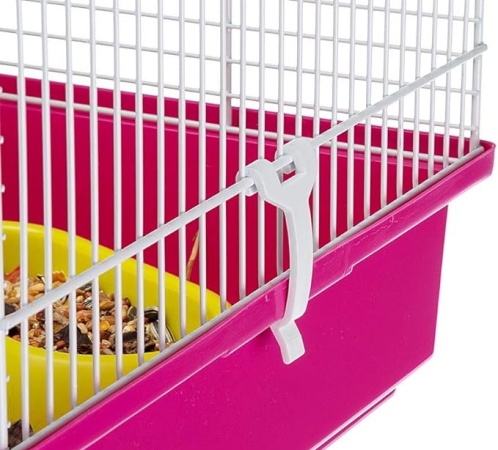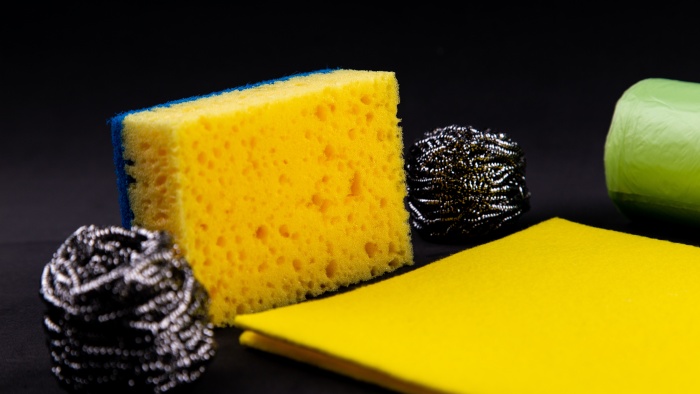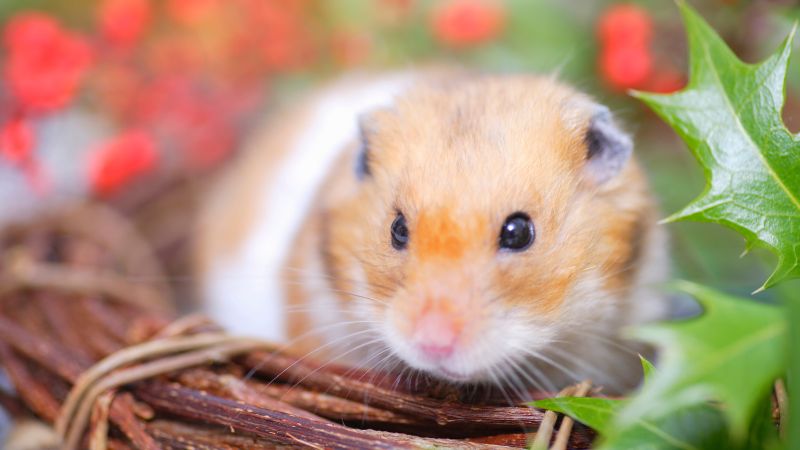
Can You Travel with a Hamster? A Comprehensive Guide
Traveling with a pet hamster isn’t as straightforward as it might seem. It requires careful consideration of your pet’s safety, comfort, and the logistics involved.

Ensuring the health and happiness of your furry companion starts with a clean and safe environment. Your hamster cage is not just a home; it’s a space where your pet eats, sleeps, and plays.
Cleaning it may seem straightforward, but the risk of leaving harmful residues from cleaning agents is a concern every hamster owner should be aware of.
In this blog, we will explore effective and safe cleaning methods that will keep your hamster’s home pristine without any harmful aftermath.
The first step in maintaining a safe habitat for your hamster is selecting the appropriate cleaning agents. Not all cleaning products are safe for small animals, so it’s crucial to know which ones to use and which to avoid preventing any health hazards to your pet.

It’s essential to choose cleaning agents that are safe for your hamster cage.
Opt for natural or pet-specific products that are free from harsh chemicals. Products containing natural ingredients like vinegar or lemon can be effective and less risky.
Read labels carefully and look for products that are non-toxic and free from fragrances and dyes.
It’s always good practice to rinse the cage thoroughly after cleaning, regardless of the mildness of the cleaner, to ensure that no potentially harmful residues are left behind.
Harsh chemical cleaners pose a significant risk to the health of your hamster. These products can leave behind residues that your hamster may ingest or inhale, leading to respiratory problems, skin irritation, or worse. Avoid cleaners with ingredients like ammonia, bleach, or strong disinfectants.
These substances can be too harsh for the sensitive respiratory system of your hamster and can cause serious health issues. Always prioritize your pet’s safety over the convenience of using stronger cleaning products.
Proper preparation is crucial before you begin the cleaning process. This includes ensuring the safety and comfort of your hamster during the cleaning and setting up everything you need for an effective and efficient cleaning session.
Before starting to clean, safely relocate your hamster to a temporary home, like a travel cage or a secure playpen. This will keep them safe and stress-free. Remove all objects from the hamster cage, including toys, bedding, and feeding accessories.
This not only makes the cleaning process easier but also allows you to inspect and clean each item individually. Remember, your hamster’s safety is paramount, so ensure their temporary space is comfortable and secure.
Take a moment to inspect the hamster cage before cleaning. Look for any signs of damage, wear, or areas that might need extra attention. This inspection is crucial for maintaining the integrity of the cage and identifying any potential hazards. Check for sharp edges, loose bars, or areas where your hamster might have chewed. Addressing these issues during cleaning can prevent future problems and ensure your hamster’s safety.
Using cleaning agents properly is as important as choosing the right ones. The correct application ensures the effectiveness of cleaning while preventing any harm to your hamster.
When using cleaning agents in your hamster cage, always dilute them according to the manufacturer’s guidelines. A diluted solution minimizes the risk of leaving harmful residues. Apply the solution using a spray bottle or a damp cloth.
This method allows for better control over the amount of cleaning agent used and ensures an even application. Remember, more cleaner doesn’t necessarily mean better cleaning – it’s about using the right amount effectively.
After applying the cleaning solution, gently scrub the hamster cage with a soft sponge or cloth. Focus on areas that are prone to dirt accumulation, like corners and beneath the bedding.

Ensure you reach all the nooks and crannies where waste and food particles can hide. However, avoid over-scrubbing, especially on coated or painted surfaces, as this can lead to damage and increase the risk of rust or deterioration.
The rinsing and drying process is critical in ensuring that no cleaning agent residue is left behind in your hamster’s habitat. This step is as important as the cleaning itself and should be done thoroughly.
Rinse the hamster cage thoroughly with water to remove all traces of cleaning solution. It’s vital to ensure that no soapy residue is left behind, as even small amounts can be harmful to your hamster. Pay special attention to corners, joints, and any textured surfaces where residues might cling.
A thorough rinse helps in removing any leftover cleaning agents, ensuring a safe and clean environment for your hamster.
After rinsing, ensure that the hamster cage is completely dry before reintroducing your hamster. Moisture can create an environment conducive to bacteria and mold growth, which are harmful to your pet’s health.
Use absorbent towels to remove excess water and then allow the cage to air dry in a well-ventilated area. Confirm that the cage is completely dry, including all corners and hidden spots, before placing your hamster back inside.
After cleaning and drying the cage, it’s time to reintroduce your hamster to their home. This should be done with care to ensure the cage is completely safe and comfortable for your pet.
Before placing your hamster back into the hamster cage, make sure it’s completely dry and free of any cleaning scent.
Any lingering moisture or odor can be uncomfortable or even harmful to your hamster. Check the cage thoroughly, as any oversight in this step can lead to health issues for your pet. Once you are certain the cage is dry and clean, you can confidently reintroduce your hamster.
Carefully replace all accessories, toys, and fresh bedding into the hamster cage. This is an excellent opportunity to rearrange the layout, providing a new and stimulating environment for your hamster.
Ensure all items are clean and dry. Inspect each item for any signs of damage or wear that could pose a risk to your hamster. A clean and well-arranged cage will not only be safer but also more enjoyable for your pet.
Regular inspection and maintenance are key to ensuring a consistently clean and safe habitat for your hamster. This ongoing process helps in identifying and addressing any issues before they become problematic.
Conduct regular inspections of your hamster cage to monitor its cleanliness and overall condition. Look out for any accumulation of dirt, waste, or signs of wear and tear.
Regular cleaning helps prevent the buildup of harmful bacteria and ensures a hygienic environment for your pet. Timely addressing any cleanliness or maintenance issues helps maintain a healthy and safe living space for your hamster.
Stay vigilant for potential problems in the hamster cage that could impact your pet’s health or safety. This includes monitoring for any damage, loose components, or areas that may harbor bacteria or other harmful substances.
Regular maintenance and prompt attention to any issues help ensure that the cage remains a safe and welcoming space for your hamster, free from hazards and conducive to their well-being.

In conclusion, ensuring your hamster cage is clean without leaving behind harmful residues is crucial for the health and well-being of your furry friend.
By carefully selecting cleaning agents, preparing properly for cleaning, using correct techniques, and conducting thorough rinsing and drying, you can maintain a safe and healthy environment for your hamster.
Regular inspection and maintenance of the cage further contribute to a comfortable and secure habitat. Remember, a clean and safe cage is a cornerstone of your hamster’s happy and healthy life.


Traveling with a pet hamster isn’t as straightforward as it might seem. It requires careful consideration of your pet’s safety, comfort, and the logistics involved.

Finding the best hamster cage for Syrian hamster is crucial, as these curious, low-maintenance, and independent pets thrive in the right environment. The primary concern

When I began, the task of selecting essentials for a natural hamster habitat was daunting. To ease this process, I’ve assembled an exclusive set of

Have you ever wondered, “Are hamsters happier in bigger cages?” Generally YES. It’s a question that might seem straightforward, but there’s more to it than

Traveling with a pet hamster isn’t as straightforward as it might seem. It requires careful consideration of your pet’s safety, comfort, and the logistics involved.

Finding the best hamster cage for Syrian hamster is crucial, as these curious, low-maintenance, and independent pets thrive in the right environment. The primary concern

When I began, the task of selecting essentials for a natural hamster habitat was daunting. To ease this process, I’ve assembled an exclusive set of

Have you ever wondered, “Are hamsters happier in bigger cages?” Generally YES. It’s a question that might seem straightforward, but there’s more to it than
Copyright © 2024 woodhamstercage. All Rights Reserved.